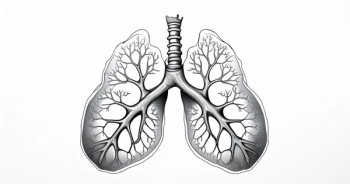
David Berz, MD, PhD, and Philip Bonomi, MD Discuss Molecular Diagnostics in NSCLC
Why is molecular diagnostics important in making treatment decisions for this patient with metastatic NSCLC?
BERZ:Although our understanding about the underlying pathobiology was very limited at the beginning of the millennium, we have made large strides over the last two decades to identify the genomic profile of those malignancies and have identified certain mutations which function as molecular drivers and disarrange the intracellular signal transduction pathway in a way that malignant transformation occurs. Those oncogenic mutations are not only of prognostic and diagnostic value, but they also help us to identify treatment targets. For those oncogenic mutations, a plethora of treatments have been developed which aid oncologists in making informed decisions.
BONOMI:The driving mutations make cells addicted to a particular biochemical pathway for proliferation and survival. When the first generation of EGFR inhibitors came out, 8- to-10% of patients had dramatic responses and medical professional were trying to figure out what molecular signature would identify that. Many felt as thought it were a complicated pathway that would take a long time to understand.
That changed back around 2004 due to an article written in the Boston Globe Sunday Edition. Thomas Lynch, MD, director, Yale Cancer Center was treating a 43 year old woman who never smoked and had lung cancer metastatic to her liver. She had been treated with chemotherapy and her disease was progressing. Lynch treated her with a first-generation EGFR inhibitor, which resulted in a dramatic response lasting for several years. Daniel Haber, MD, PhD, director, Massachusetts General Hospital Cancer Center contacted Lynch and asked how many patients he had like that and if he had any tissue samples.
Haber received the tissue and sequenced the EGFR gene to find exactly what he predicted. This revelation has led to an explosion of molecular studies in lung cancer and in the identification of new targets and new targeted therapies.
Naoko T. is a 74-year-old retired high school teacher originally from Nagoya, Japan. She currently lives in San Diego, California and enjoys tennis and traveling with her husband.
- In July of 2013, the patient was diagnosed with NSCLC after presenting to her PCP with dyspnea and intermittent back and chest pain; cardiac workup was negative, and the patient has no history of smoking
- Initial CT scan showed a large mass in the right lower lobe and 2 small lesions in the T9 and T10 vertebra, suspicious for metastatic disease
- Biopsy and histology of the primary mass and metastatic lesion showed TTF-1+, p40 -, p60 - consistent with bronchogenic adenocarcinoma NSCLC
- Mutational analysis on the primary mass showed EGFR exon 19 deletion and no other actionable mutations
- Biopsy and histology of the primary mass and metastatic lesion showed TTF-1+, p40 -, p60 - consistent with bronchogenic adenocarcinoma NSCLC
- She is initiated on systemic therapy with erlotinib for metastatic disease
- After 5 cycles, the patient displays good response, with clinical improvement and radiologic improvement in primary and metastatic lesions
In November 2014, after several months of stable disease, the patient returns for follow-up visit with worsening back pain, and her CT scan is consistent with progression of metastatic lesions.
- Biopsy and mutational analysis of the thoracic lesion is unsuccessful due to limited DNA content, and the patient is initiated on a second-generation EGFR TKI, with presumed resistance to erlotinib
- After 2 cycles, the patient developed severe diarrhea and fatigue requiring hospitalization and was not reinitiated on therapy
- A brief trial of systemic chemotherapy was also unsuccessful due to febrile neutropenia requiring hospitalization
At this point, the patient declined further treatment, and by March 2015, she returned with worsening dyspnea and declining performance status
- A second biopsy of the thoracic lesion is attempted, and allelotyping shows no actionable mutation; sample is T790M negative
- Patient is also screened for circulating tumor DNA in urine, which shows T790M-positive disease
- She is initiated on a third-line TKI and shows clinical and radiologic improvement following 3 cycles






































